To enhance the usability of a key statistical and congressional reporting tool used by the Department of State for its international exchange programs, CITI chose a new platform (MS .NET combined with Silverlight), which enabled it to build more user-friendly features into the system while remaining under budget and on schedule. The resulting system delivered to DOS was more usable and efficient and resulted in decreased labor time and is now saving the Department more than $1.5 million, annually. One of the many bureaus of the U.S. Department of State (DOS) chartered with global outreach and diplomacy had a vital need to find a software solution for aggregating huge amounts of data connected with its international exchange programs as well as for processing various data elements associated with the funding and the participants of those programs. The bureau must report on the data to external U.S. Agencies, U.S. Congress, and the public. One of the chief recipients of its data is the Interagency Working Group (IAWG) established by the Office of the President to capture statistics on U.S. Government-sponsored international exchange and training. This DOS bureau had a critical need to be able to produce meaningful reports that would truly assist decision making concerning the exchange programs. Before developing its own customized solution for this purpose, DOS used the IAWG’s application, but found that the tool fell short and did not enable it to generate the many other reports and exports required by its other stakeholders. DOS was hunting for ideas on how to best manage and report on this bureau’s statistical data. So, DOS originally built their number crunching statistical and program management tool in Delphi, an object-oriented, visual programming environment. However, the system had some problems, chief of which were its lacks in the areas of usability and maintainability. The system wasn’t living up to the agency’s expectations for it. Even after several upgrades to the system, earlier versions still required several non-intuitive steps on the part of users as well as unnecessarily repetitive user actions for performing certain tasks. Users had to repeat certain actions numerous times in order get the desired results. After such a disappointing history with this system, the IT management team at DOS came to CITI—one of its new contractors, but one that had quickly earned its trust as an innovative, results-oriented company—to overcome the many system-related difficulties that still daunted its educational and cultural exchange organization. CITI completely redesigned and transformed the solution, coding it using Microsoft’s .NET framework and leveraging Silverlight, a free web-browser plug-in that enables interactive media experiences and rich business applications. CITI’s design enabled users to create and modify data entries without the need for excessive navigation and it reduced the cycle times required for several business processes. The team quickly accomplished the migration of approximately 30 customized reports from Delphi Reports to Crystal Reports. At last, the bureau had an application that was much easier to use and navigate. The more user-friendly design employed by CITI in this enhanced Silverlight version has fostered easier adoption by different user groups and offices. This has directly led to better data integration and cut down on the reconciliation process resulting from a previously underutilized application. In comparing the actual time spent by users who performed tasks with the previous version with what they are doing now with the CITI-built system, DOS calculates the average user is now spending at least 50 percent less the time on data entry to produce high quality reporting, which it estimates saves it more than $1.5 million each year.
Visit our new website for Healthcare & Human Services
Breadcrumb
Back to Success Stories


